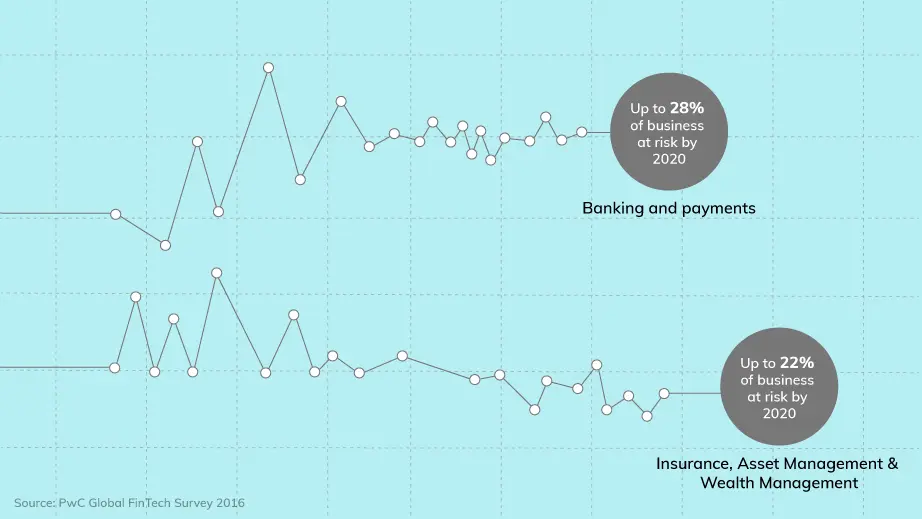Experience-Driven Practices Redefining the Industry's Future
82% of banks, insurers, investment managers plan to increase FinTech partnerships; 88% concerned they’ll lose revenue to innovators*.
Key trends that are changing the BFSI industry
1. Traditional institutions not in pace with Digital and emerging FinTechs
2. Inability to leverage Customer Intelligence as a precursor of growth
What could be some major impediments to the above:
- Existence of a transactional relationship with banks, which has created a gap between the needs of the customer and the services banks offer.
- Most financial applications and services(such as transactions)are unexciting and cumbersome to use complex to understand and engage with.
- Financial institutions not seen as catalyzing financial well being as they are not able to dispense financial advice, strategies, and support effectively and in a robust manner.
- Delay of traditional players to shift to digital and adopt technological and design innovations on the fly.

Estimated percentage of business revenues that will be at risk by 2020 due to disruption in banking is 28% and 22% in insurance, asset and wealth management*.
Technological solutions are definitely important to reckon with to ease off the risk while re-engineering the face of the sector, yet technology without design is as obsolete in value, as ideas are without language.
Designing superior fintech solutions
Design Thinking and UX can bring indispensable value on the table by:
1. Understanding Needs through thorough research:
2. Making it Simple
3. Bracing for the future
4. Reducing complexity, latency and ensuring safety
Design hence becomes incumbent in today’s world as it takes a consumer-centered approach that puts the discovery of highly nuanced, even tacit, consumer needs at the forefront of the innovation.
Detailed Impact and future trends in the Financial Services sector:
of incumbents expect to increase FinTech partnerships in the next 3-5 years
expect to adopt blockchain aspart of an in production system or process by 2020
expected annual ROI on FinTech related projects
1
Insurance
Homogenization of Risks
Self Insuring gains momentum (reducing overall revenue for the industry)
Growth of personalized and customized insurance
Think Design’s Recommendation
2
Payments
Towards a cashless economy
Integrated and seamless payments
Emerging alternate payment rails
Think Design’s Recommendation
3
Deposits & Lending
Customer-centric banking
Emerging alternative lending models
Think Design’s Recommendation
4
Investment Management
Automated investment management platforms
Process Externalization of services
Think Design’s Recommendation
5
Market Provisioning
New information platforms
Growth of algorithmic trading
Think Design’s Recommendation
Think Design’s approach and recommendations to achieve superior banking customer experiences
1. Segment right
2. Design for journeys
3. Detail interactions
4. Focus on affordances
5. Always test
Impactful partnerships across Banking, Financial Services, Insurance and Fintech










Creating Value in Every Industry
News media & Entertainment
Know More
Enterprise & IT
ERP, Utilities, HRMS, Planning tools, Data & Analytics, LMS, Enterprise systems, Productivity suites.
Know More
Healthcare & Lifesciences
Medical devices, Hospital management systems, Pharma, Wearable tech, Personal healthcare, Fitness, Wellness.
Know More
Networks & Smart devices
Telecom, Home automation, Data networks, M2M, IoT, Utilities, Law enforcement, Defense & Border security.
Know More
Education & Edtech
Institutions, Portals, Apps, Learning management, Gamified learning, MOOCs, Universities, Learning centers.
Know More
Banking & Financial Services
Fintechs, Banks, Insurance, Payments, Wallets, Lending, Trading, Investment, Blockchain, Currencies, Wealth management.
Know More
End-to-End Design Expertise




